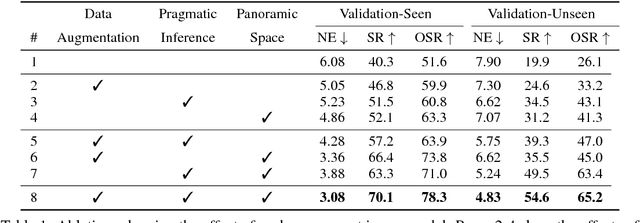Speaker-Follower Models for Vision-and-Language Navigation
Paper and Code
Oct 27, 2018



Navigation guided by natural language instructions presents a challenging reasoning problem for instruction followers. Natural language instructions typically identify only a few high-level decisions and landmarks rather than complete low-level motor behaviors; much of the missing information must be inferred based on perceptual context. In machine learning settings, this is doubly challenging: it is difficult to collect enough annotated data to enable learning of this reasoning process from scratch, and also difficult to implement the reasoning process using generic sequence models. Here we describe an approach to vision-and-language navigation that addresses both these issues with an embedded speaker model. We use this speaker model to (1) synthesize new instructions for data augmentation and to (2) implement pragmatic reasoning, which evaluates how well candidate action sequences explain an instruction. Both steps are supported by a panoramic action space that reflects the granularity of human-generated instructions. Experiments show that all three components of this approach---speaker-driven data augmentation, pragmatic reasoning and panoramic action space---dramatically improve the performance of a baseline instruction follower, more than doubling the success rate over the best existing approach on a standard benchmark.
 Add to Chrome
Add to Chrome Add to Firefox
Add to Firefox Add to Edge
Add to Edge